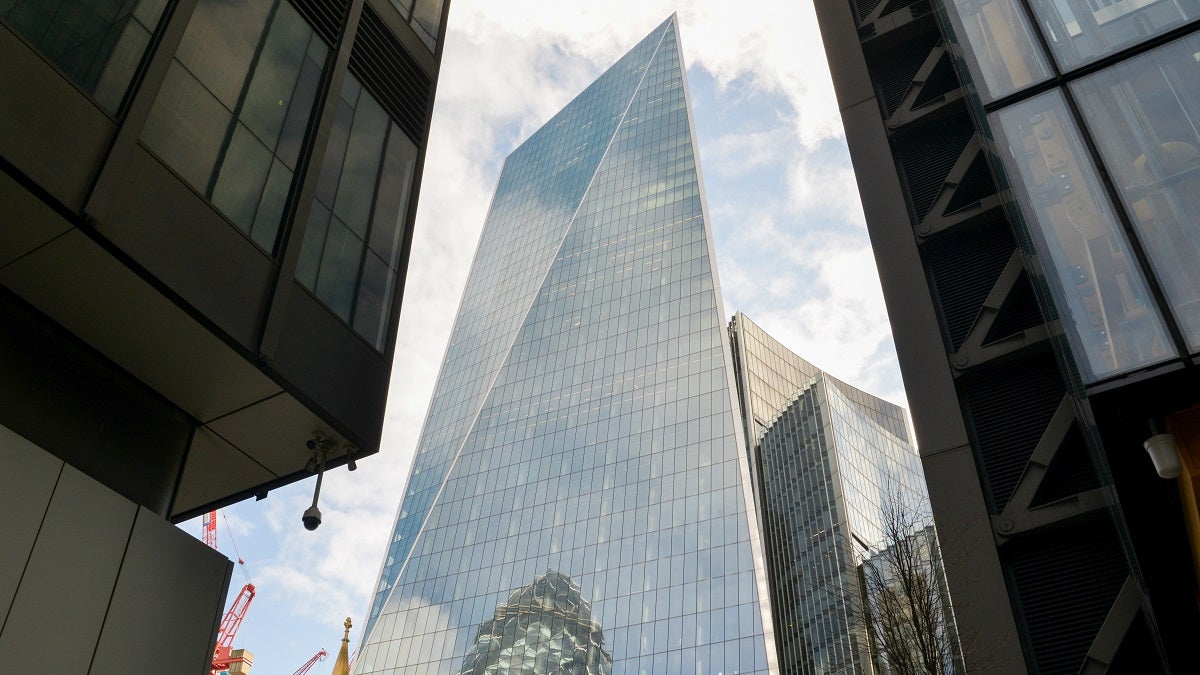
As you read this, all too likely from your home office, consider that the construction industry is responsible for up to 40 per cent of global emissions. Not only that, 64 per cent of commercial buildings in London alone were built before 2000 and could benefit from being upgraded.
There’s a need for energy-efficient and low-carbon buildings that are more than just concrete, glass and steel. Green buildings are a global investment opportunity that could be worth $24.7 trillion by 2030, according to the International Finance Corporation.
Although sustainability was an underlying trend before the coronavirus pandemic struck, the crisis has accelerated the realisation among commercial real-estate stakeholders that the built environment can affect general wellbeing; the carbon footprint of offices has also become an area of focus for more occupiers. Investing in green buildings is being pushed further up the environmental, social and governance (ESG) agenda.
According to a recent survey of 1,500 occupiers, conducted by international law firm CMS, 82 per cent of respondents said the office would continue to be a source of human connection post-pandemic, while 61 per cent said they would be refurbishing offices once people return to the workplace.
Furthermore, 65 per cent said they’d happily take a pay cut to work in a sustainable building and 62 per cent said a corporate social purpose was now more important than it was this time last year.
Adapting to meet demand
For the most part, institutional investors don’t need convincing. Research from Warburg-HIH Invest found 51 per cent of 100 respondents were expecting a higher return on real-estate projects that take ESG into account and 70 per cent said ESG is now relevant to their investment criteria.
Despite this, there are investors who are wary about investing in green commercial real estate. And property developers often need help seeing the benefits too. As such, there’s a gulf between the demand for sustainable buildings and the supply. Investors and property developers will have to rethink their approach to meet the demand.
“I expect tenants will start negotiating for the office space and quality they actually need. This means developers with lower-quality locations will need to adapt to this new demand,” argues Gareth Simm, chief executive of HE Simm Group, a leading mechanical and electrical services provider. The company has worked on a number of commercial projects, including at the Capital Building in Liverpool.
“They will need to upgrade and reconfigure spaces, bringing in touch-free technologies, natural venation and solar-controlled glazing,” says Simm.
ESG investment in commercial real estate is more than a few breakout areas and plush furnishings to improve workers’ wellbeing. Low-carbon materials, such as timber, will need to be used and energy-efficient infrastructure installed.
It doesn’t come cheap though. And it’s because of the upfront costs of designing efficiencies into buildings that there’s a reluctance to update or plan new developments with sustainability in mind. Looking beyond the upfront cost is critical to encourage more capital investment.
“While it is more expensive to build a sustainable building, better materials and more considered design can often halve maintenance and upgrade costs across that building’s life cycle,” says Simm. “But if buildings are built cheaply to tick ESG boxes, and without considering long-term maintenance and replacement costs, then a green building can quickly become hugely unsustainable in the long term.”
Green premium incentive
When factoring in a building’s life cycle, from the materials and construction processes used to how efficiently its infrastructure operates, the cost of going green can justify the initial investment.
The problem is “a higher demand for green office buildings from forward-thinking tenants is yet to translate into measurable uplifts”, says Douglas Higgins, project director at First Base. The property developer is overseeing redevelopment of Bristol’s historic Soapworks building, which is being turned into a mixture of homes, restaurants and workspaces.
Things are slowly changing. Commercial real estate is poised to benefit from an expansion of ESG lending options available for projects that not only reduce their carbon emissions but meet certain key performance indicators over time. These could include how resilient a building is and whether it offers a healthy, working environment.
“It would have been forgivable if lenders had placed initiatives such as sustainability on hold during this difficult time, but this hasn’t been the case. Post-pandemic, lenders will continue to put an increasing amount of time into structuring real-estate loans that specifically support green and ESG initiatives,” says Lisa Attenborough, who heads up Knight Frank’s debt advisory team. The real-estate consultancy addressed the global rise of sustainable buildings post-pandemic in last year’s edition of its annual Active Capital The Report.
Buildings that aren’t energy efficient and are more expensive to run are often subject to brown discounts where tenants can rent office space at a cheaper rate. But with tenants inclined to look elsewhere and pay more for offices that promote wellbeing and sustainability, awarding premiums for buildings designed to operate more efficiently should help to incentivise investors and developers who are holding back on going green.
“As older buildings become excluded by these forward-thinking tenants in their office searches, their void periods will extend and values will decline. This will give commercial real estate a clearer justification for making that investment in sustainable buildings,” Higgins concludes.
Ultimately, greener buildings will help to attract higher rents, more lucrative tenants and environmentally conscious employees, making sustainability a wise commercial real-estate investment.

As you read this, all too likely from your home office, consider that the construction industry is responsible for up to 40 per cent of global emissions. Not only that, 64 per cent of commercial buildings in London alone were built before 2000 and could benefit from being upgraded.
There’s a need for energy-efficient and low-carbon buildings that are more than just concrete, glass and steel. Green buildings are a global investment opportunity that could be worth $24.7 trillion by 2030, according to the International Finance Corporation.





